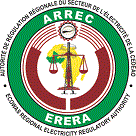The Director-General of the International Renewable Energy Agency, IRENA, Francesco La Camera, has called on global leaders to invest in renewable energy sources to bridge the renewable deployment gap in pursuit of resilience, energy security and inclusive economies.
According to the IRENA Director-General, renewables are the backbone of the energy transition and a viable climate solution.
Sadly, he noted that out of the 183 parties to the Paris Agreement with renewable energy components in their Nationally Determined Commitments (NDCs), only 143 have quantified targets with the vast majority focusing on the power sector. Only 12 countries had committed to a percentage of renewables in their overall energy mixes.
“At a time when we desperately need to see rapid implementation, I call on world leaders to urgently close the renewable deployment gap in pursuit of resilience, energy security and inclusive economies. IRENA’s report is a warning to the international community telling them that renewables offer a readily achievable climate solution but require immediate action. Climate pledges must enhance ambition to unlock the full and untapped potential of renewables.
“There is a need for real urgency. Despite some progress, the energy transition is far from being on track,” he added.
“Any near-term shortfall in action will further reduce the chance of keeping 1.5°C within reach. Under the COP27 slogan ‘Together for implementation’, we must move from promises to concrete solutions to benefit people and communities on the ground,” IRENA’s Director-General Francesco La Camera said in a statement issued on Monday at the opening of the United Nations Climate Change Conference in Egypt.
To achieve current targets by 2030, IRENA stressed that countries would need to add 2.3 TW of capacity, equivalent to average yearly additions of 259 gigawatts (GW) in the next nine years.
This is below the actual installed capacity added in the past two years—in 2020 and 2021, despite the complications that resulted from the covid-19 pandemic and consequent supply chain disruptions, the world added almost 261 GW each year.
Furthermore, renewable power targeted by 2030 remains concentrated in a few regions globally.
Asia makes up half of the global targeted capacity, followed by Europe and North America.
In comparison, the Middle East and North Africa account for just three per cent of global deployment targets for 2030, despite the region’s high potential. And Sub-Saharan Africa accounts for just over two per cent of the total global for 2030.
The countries targeting the highest level of deployment are all part of the G20, making up almost 90 per cent of the global aggregated target. Although they make up a small share of past renewable deployment, aggregated targets by least developed countries (LDCs) and small island developing states (SIDS) would double their current renewable capacity.
Source: https://energynewsafrica.com















